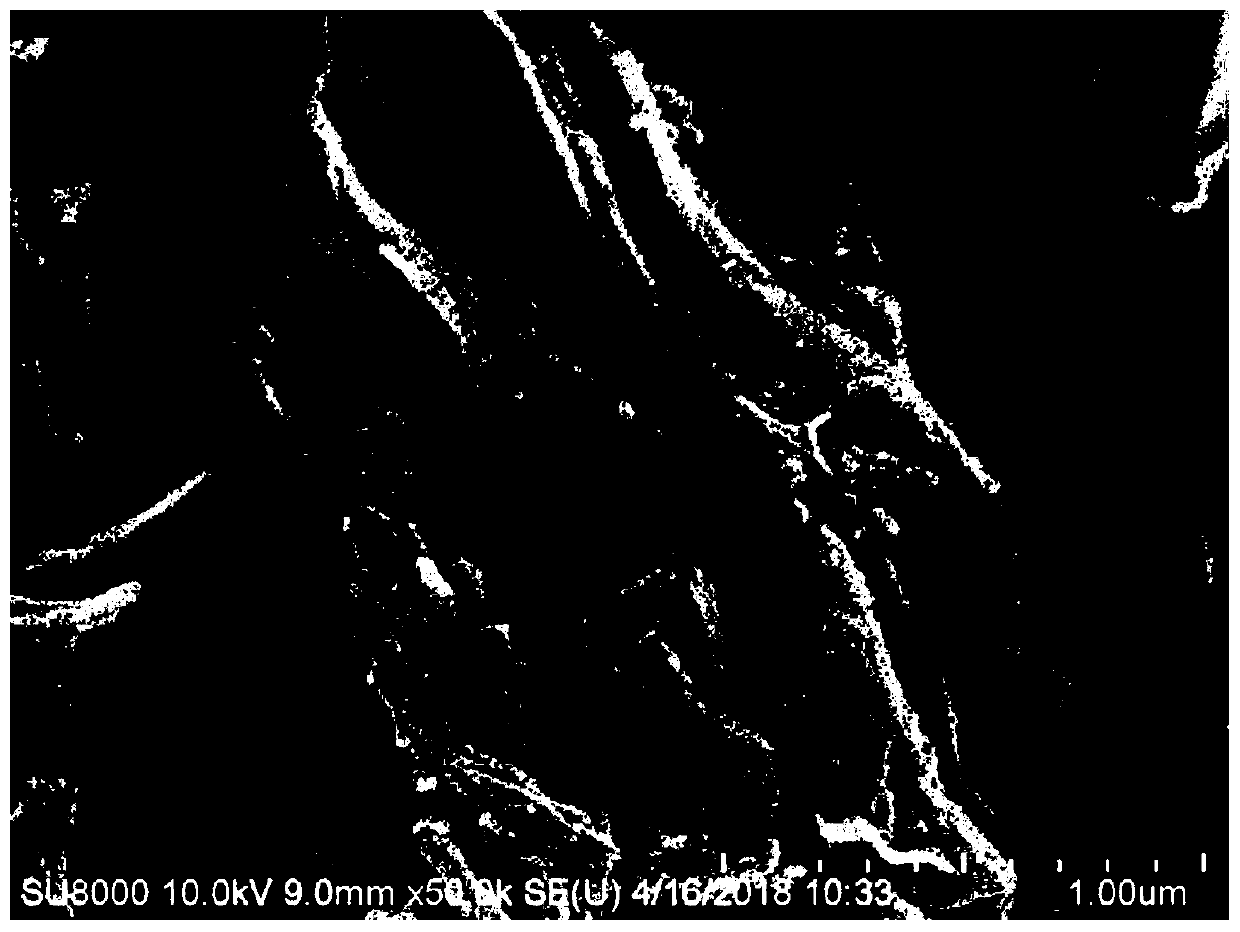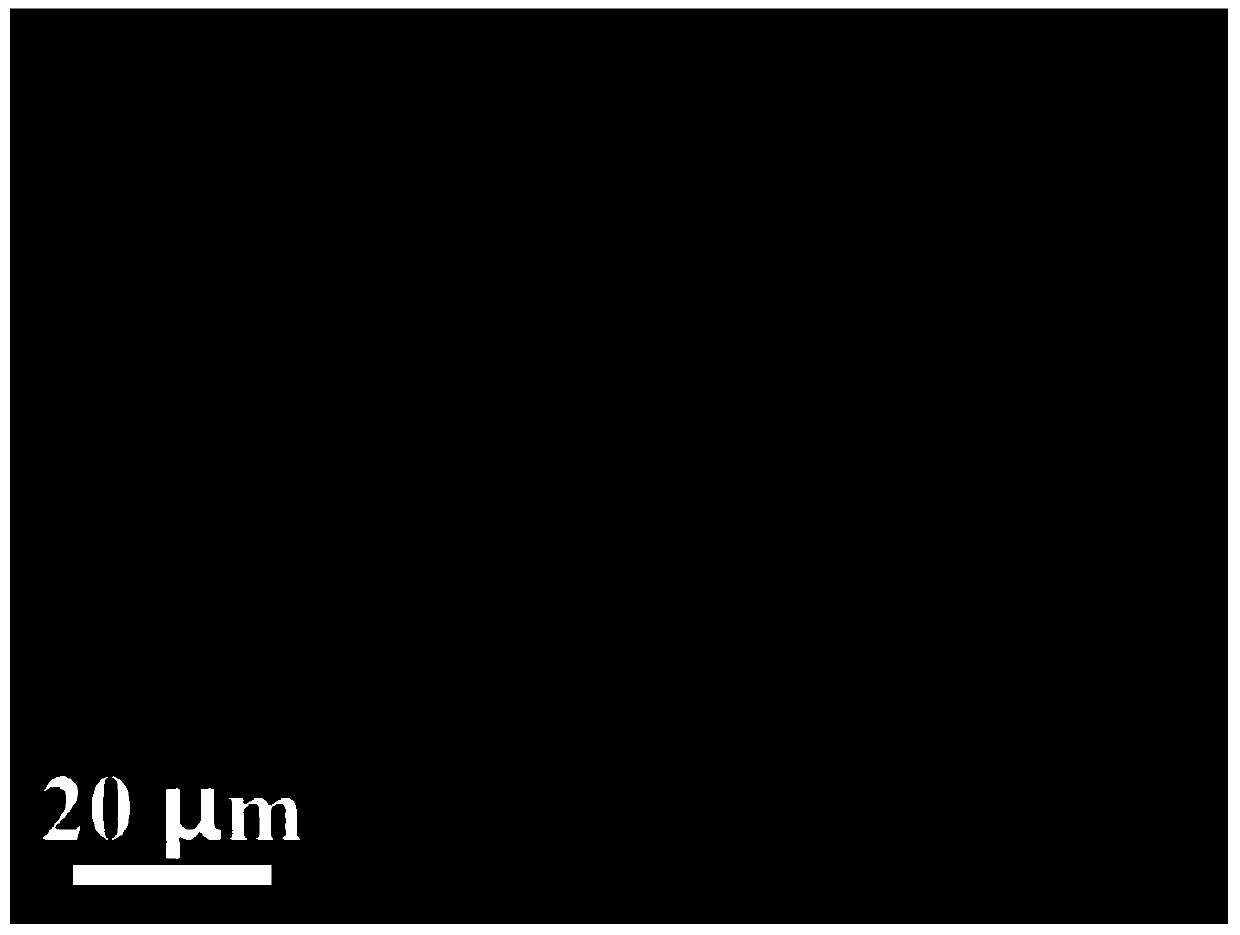Method for preparing tin-based sulfide lithium ion battery negative active material under room temperature
A negative electrode active material, tin-based sulfide technology, which is applied in battery electrodes, secondary batteries, circuits, etc., can solve the problems of large volume change and short cycle life of tin-based negative electrode materials, and achieves short reaction cycle time and improved efficiency. The effect of high cycle life and specific capacity
- Summary
- Abstract
- Description
- Claims
- Application Information
AI Technical Summary
Problems solved by technology
Method used
Image
Examples
specific Embodiment approach 1
[0036] Embodiment 1: The method for preparing the negative electrode active material of a tin-based sulfide lithium ion battery at room temperature in this embodiment is carried out according to the following steps:
[0037] 1. SnCl 2 ·2H 2 O is dissolved in deionized water to obtain solution a;
[0038] 2. Dissolving potassium ethyl xanthate in deionized water to obtain solution b;
[0039] 3. Dispersing the conductive carbon material into deionized water to obtain dispersion c;
[0040] 4. Mix the solution a and the dispersion c and continue to stir to obtain the solution d;
[0041] 5. Add solution b dropwise to solution d under stirring, stop stirring after the dropwise addition is completed, seal the container containing solution d, and finally stand for treatment to obtain a precipitated product;
[0042] Sixth, taking the precipitation product obtained in step 5, and sequentially performing suction filtration, washing with deionized water and vacuum drying on the pr...
specific Embodiment approach 2
[0051] Embodiment 2: The difference between this embodiment and Embodiment 1 is that the molar concentration of Sn ions in the solution a in step 1 is 0.2-4M. Other steps and parameters are the same as in the first embodiment.
specific Embodiment approach 3
[0052] Embodiment 3: The difference between this embodiment and Embodiment 1 or 2 is that the mass fraction of potassium ethyl xanthate in the solution b in step 2 is 0.2-2%. Other steps and parameters are the same as in the first or second embodiment.
PUM
| Property | Measurement | Unit |
|---|---|---|
| Concentration | aaaaa | aaaaa |
Abstract
Description
Claims
Application Information
 Login to View More
Login to View More - R&D
- Intellectual Property
- Life Sciences
- Materials
- Tech Scout
- Unparalleled Data Quality
- Higher Quality Content
- 60% Fewer Hallucinations
Browse by: Latest US Patents, China's latest patents, Technical Efficacy Thesaurus, Application Domain, Technology Topic, Popular Technical Reports.
© 2025 PatSnap. All rights reserved.Legal|Privacy policy|Modern Slavery Act Transparency Statement|Sitemap|About US| Contact US: help@patsnap.com



